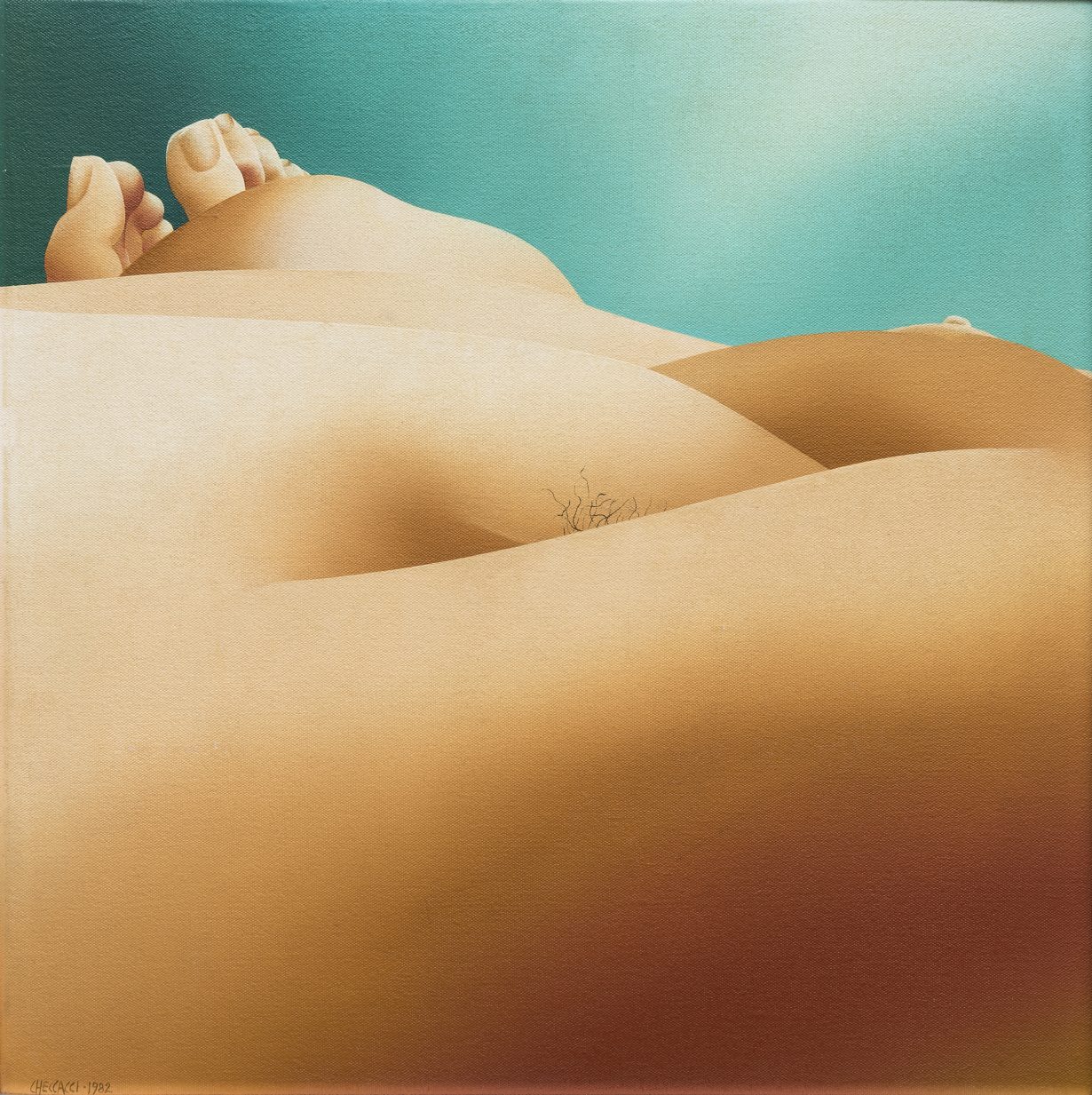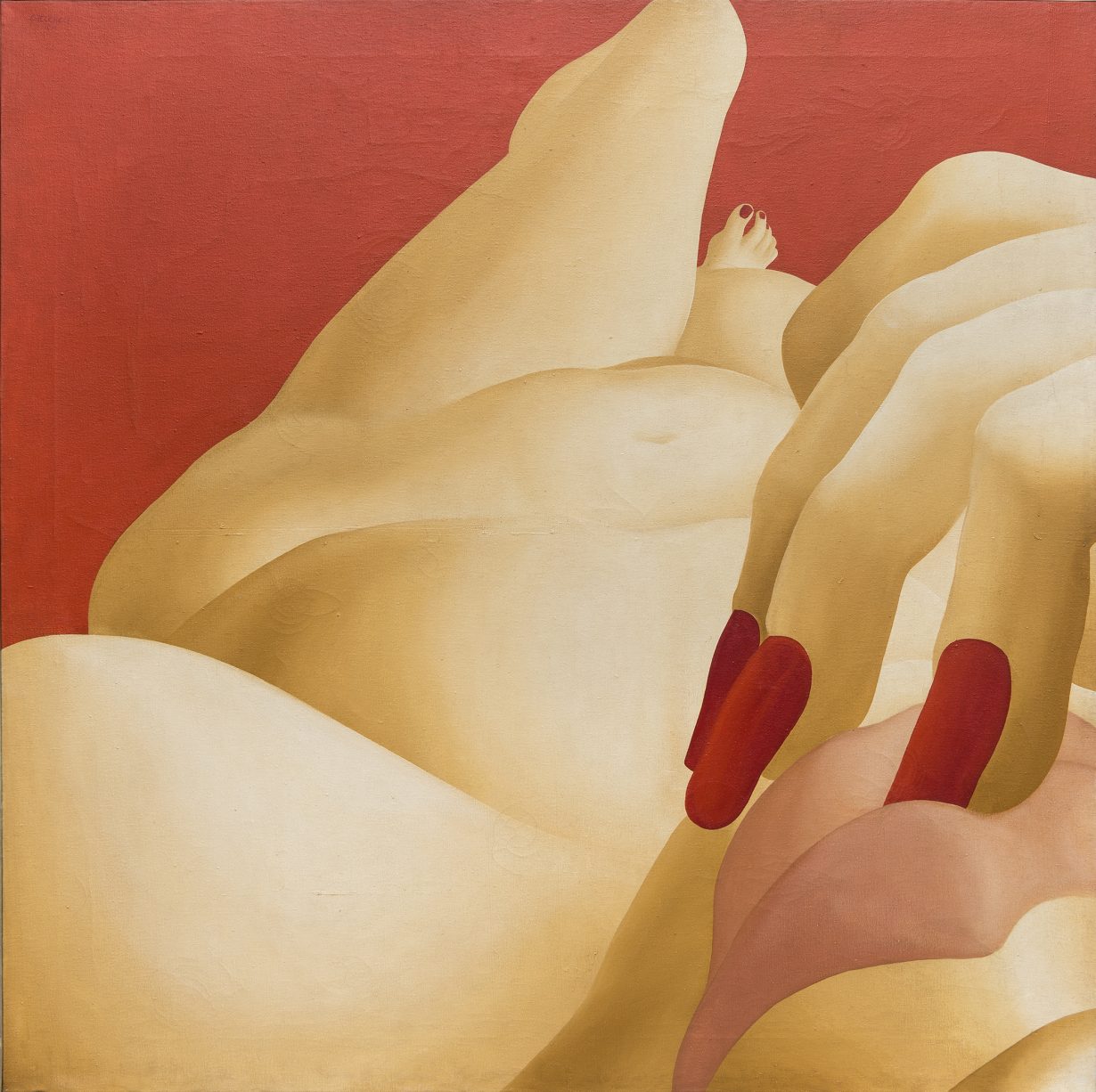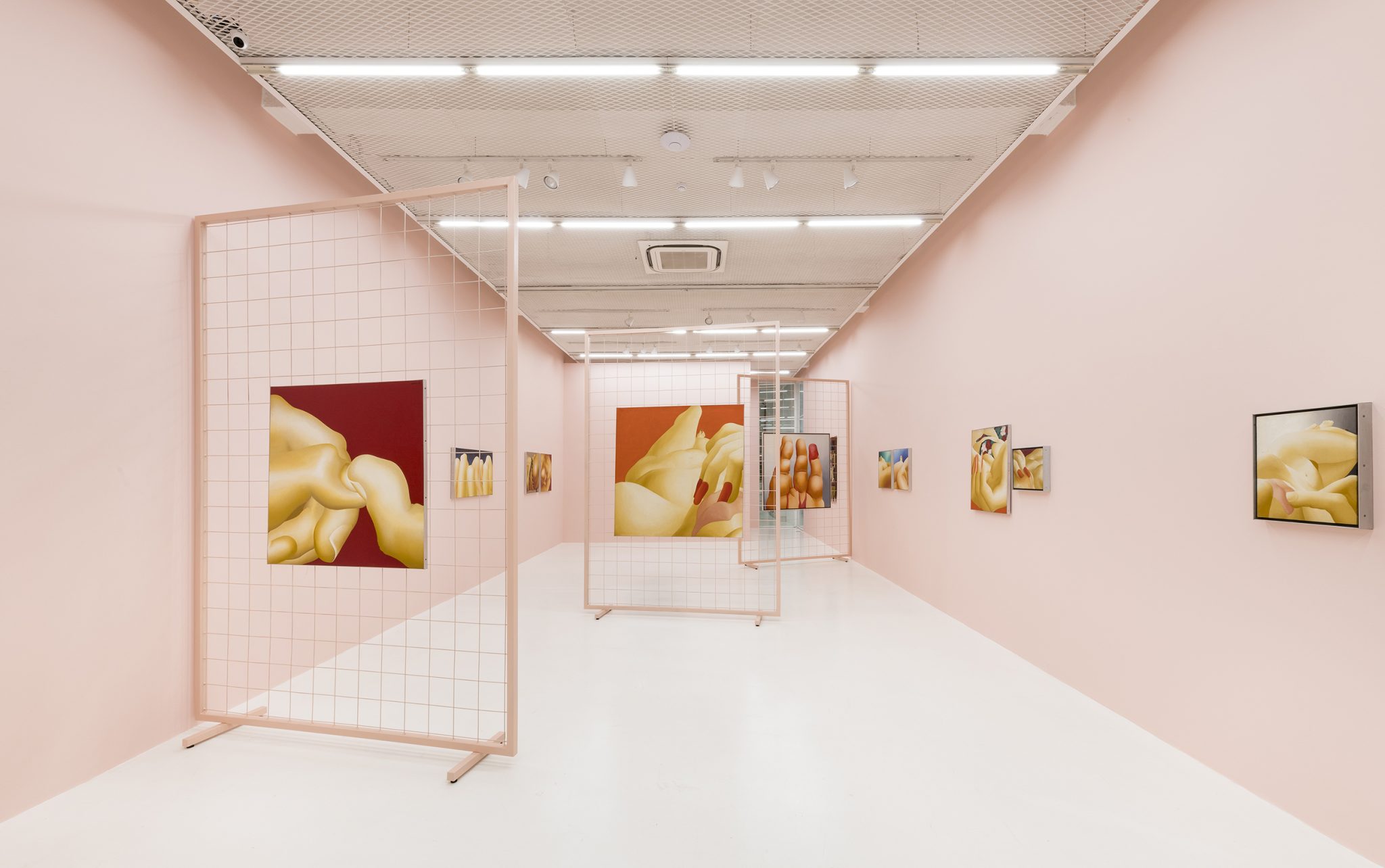In Tactics of the body at Galatea, São Paulo, the human form takes the appearance of a sort of sublime geography
Strands of pubic hair or wisps of grass in the landscape? Rolling breasts and plump buttocks or a stark desert drift? In Carnações (1982) the roots of the black hair poking up over the fleshy horizon are obscured by what we might guess to be a leg; a huge pale dune that falls across the middle of the canvas. Beyond are further rolls of skin in repose and finally the mound of a breast, made unambiguous only because of the nipple. In the distance, against the night-sky-blue background, some toes finally give the game away: we are looking at a nude, not a landscape. Since the 1960s the human body in Pietrina Checcacci’s hands – and there’s lots of hands and fingers and fingernails in her paintings too – has taken the appearance of a sort of sublime geography; flesh made earth in an eco-sexual fever-dream.

This is a packed show for the Italian-born artist, who moved to Brazil as a teenager in 1954. The visitor to the two-room Galatea gallery finds 26 works, the majority dating from 1965 to 1986 – roughly the years of Brazil’s dictatorship – hung both on the pink-painted walls and a series of similarly hued freestanding metal racks. Checcacci was initially a Pop artist influenced by the censorious conditions of the military regime, making works that depicted groups of people: intellectuals, activists, the public, assembling and in conversation. In each painting of the series A novela (Espectadores) (1965/67) we see various figures doubled across the single canvas, rendered in the flat, even colour that she would stay with in the ensuing decades. Similar imagery was used in an outdoor exhibition of flags that Checcacci took part in a year later with peers including Lygia Pape, Hélio Oiticica and Antonio Manuel, and though the specific identities of the subjects have faded into obscurity, the works still maintain their sense of agitprop.

The gradual abstraction and obfuscation of the female form crept into her work from the late 1960s onwards, and it is these more interesting works that make up the majority of this show: a self-objectification of the female body made in the shadow of a deeply patriarchal government. In one of a series of works that are each made under the title Evaterra (1971), the viewer takes the point of view of the subject painted, a woman looking down at her own voluptuous body, one hand held up to her mouth, the fingers with their scarlet-red painted nails circling the lips that dominate the extreme foreground of the canvas. It’s a view replicated in two further works: hung as a diptych, the perspective shifts slightly across each canvas.
There is an erotic edge to the work, underpinned by a sense of violence in the contortion of the human body, and, perhaps because all the figures remain faceless and anonymous, a sense of voyeurism. While she picks up the refrain of politically tinged Pop feminism found in fellow female Carioca artists of the period – Wanda Pimentel and her scenes of messy domesticity, or the legs and sexiness of Regina Vater – in works such as Carne e corda (1982) and A doçura dos corpos (2011), Checcacci takes the tension further. In the former the body is trussed up in ropes, like meat strung to roast; in the latter, a panoramic landscape, at least four pairs of legs rub up against each other like sharp cliffs. Checcacci’s feminist vista is a broader one, an exploration of an ecofeminist landscape in which both body and land are conduits to pleasure and pain, spaces that bring both opportunity and portents of disaster.
Tactics of the body at Galatea, São Paulo, 4 June – 13 July
